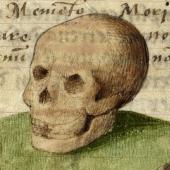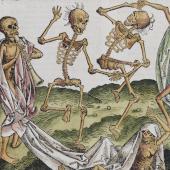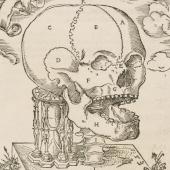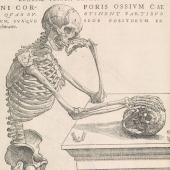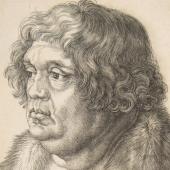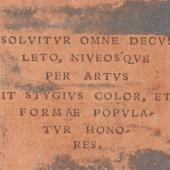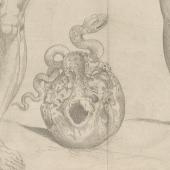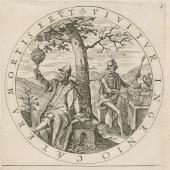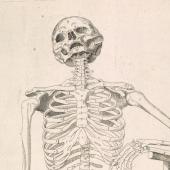Memento mori
Vivitur ingenio
The skeleton as well as the skull have long been associated with death. The ‘Dance of Death’ was frequently depicted as prancing skeletons, and skulls served as symbols of ‘memento mori’, a reminder of death and the ephemerality of human existence. Vesalius must have been familiar with these motifs since the Cemetery of Innocents in Paris that he frequented as a student had a mural depicting people in various stations of life dancing with cadavers. One of Vesalius’s figures of a skeleton, with his head resting on a sarcophagus, explicitly makes this association with death. In the 1555 frontispiece, the association with death was made clearer, as the skeleton was altered to hold a scythe.
Vesalius’s skeleton figures became the most copied anatomical figures in anatomy and art. They were copied into other objects such as medals (for example the ones of by Adolph Occo II and III, Augsburg physicians known to Vesalius), a triptych (Paul Reichel’s Toedlein-Schrein, c. 1583, Ambras Castle, Innsbruck), or silver salt-cellars (Wellcome Collection). The confluence of skeletons and death suggest that there was no clear division in the period between ‘scientific’ and ‘artistic’ images.
